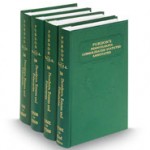Nonresident Violator Compact (NRVC)
The purpose of the NRVC is to standardize methods utilized by the various jurisdictions to process non-resident violators receiving citations, and their failure to appear or otherwise failure to comply with outstanding moving traffic summons.
The compact allows participating jurisdictions to inform each other’s motor vehicle administrations when a resident of one jurisdiction did not comply with the citation’s terms. Once the home jurisdiction motor vehicle administrator receives notice of a resident’s citation noncompliance, the procedure for license suspension is initiated.
History
A non-resident violator compact was initially developed by the National Conference of Commissioners on Uniform State Laws in 1965, which was known as the Traffic Violations Compact.
Maryland, Virginia and the District of Columbia, utilizing the 1965 format, developed bilateral agreements known as the Traffic Summons Reciprocal Agreement. In 1969, New York, New Jersey, and a number of New England states also entered into similar reciprocal agreements.
These early agreements contained procedures similar to those adopted for the Non-Resident Violator Compact of 1977 (NRVC) (described above).
Limitations of the Early Agreements
The benefits of the early agreements were limited because the reciprocal agreements were not uniform and application practices varied in participating jurisdictions. A state might have agreements with bordering states but not with others.
In Feb. 1972, the Mid-Atlantic Governor’s Conference established a reciprocity task force to alleviate the problem of limited contiguous state agreements. In May of that year, the task force (composed of governors, state representatives, and motor vehicle administration officials) met, and by October a uniform Non-Resident Violator Compact (referred to as the 1972 Compact) was drafted. Delaware, Maryland, and New Jersey were the first signatories to the 1972 Compact.
NHTSA has had a long-standing interest in the compact and its benefits. In Oct. 1976, NHTSA entered into a contract with the Council of State Governments for the purpose of developing a “model nonresident violator compact, enabling legislation, and a procedure manual.”
AAMVA’s Involvement
The Council, with assistance from NHTSA and AAMVA, identified an advisory group of nationally recognized leadership in the area of motor vehicle administration and traffic safety to draft the model compact. Ejner J. Johnson, former Maryland Motor Vehicle Administrator and past president of AAMVA, accepted the task as advisory group chair-person.
The project goals of the model Nonresident Violator Compact of 1977, enabling legislation, and a procedure manual were reached. An additional contribution of the advisory group was the development of an information component that produced a compact document and a visual promotion package for presenting the compact to both state and national constituencies. The Nonresident Violator Compact of 1977 was approved by the Committee on Suggested State Legislation of the Council of State Governments for inclusion in 1978 Suggested State Legislation.
In 1978 the Board initiated actions to amend the Compact’s Bylaws. The proposed amendment was aimed at establishing an Executive Board that would represent and act for the membership in the conduct of NRVC business between annual meeting. The Executive Board would be given authority to make decisions and to arbitrate on behalf of and with the consent of the member jurisdictions. The amendment to the NRVC Bylaws was approved by mail ballot in Aug. 1988.
